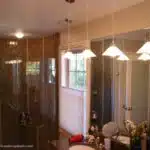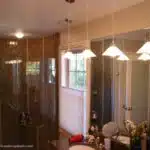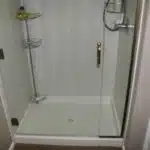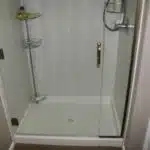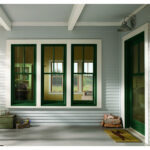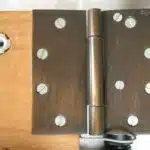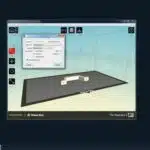As an installation technician and expert, I have come across many clients who want to install a sliding glass door but are hesitant because they do not know how to go about it. Installing a sliding glass door can be a great way to add natural light and create an indoor-outdoor flow in your home. However, the process requires careful planning and execution to ensure that the door is installed correctly and functions properly.
In this article, we will guide you through the steps involved in installing a sliding glass door. We will cover everything from measuring and preparing the opening, selecting the right type of door, to making sure that the door is securely fastened and sealed. By following our instructions, you will be able to confidently install a sliding glass door yourself or supervise an installation team with ease. So, let’s dive into the world of sliding glass doors and learn how to transform your living space!
Assessing Your Home’s Needs
Before installing a sliding glass door, it is important to assess the location where it will be installed. Take note of the surroundings and determine if there are any potential obstructions that may hinder the functionality of the door. Some common obstacles include electrical outlets, light switches, and vents. It is also important to check the condition of the wall where the door will be installed. Make sure that it is structurally sound and can support the weight of the door.
Another factor to consider when assessing your home’s needs is evaluating climate control. Sliding glass doors are prone to heat loss during winter months and heat gain during summer months. This can lead to higher energy bills if not properly addressed. To combat this issue, it is recommended to install doors with double or triple-pane insulated glass and weatherstripping around the frame.
By carefully assessing your home’s needs before installing a sliding glass door, you can ensure that you are making an informed decision that will benefit you in the long run. The next step in this process involves measuring the opening where you plan on installing your new door.
Measuring The Opening
Accurate measurements are crucial when installing a sliding glass door. Measuring the opening is the first step of the installation process. It is essential to measure accurately to ensure that the door fits perfectly and operates smoothly.
Common mistakes include measuring only one side of the opening or measuring from an uneven surface. To avoid these errors, measure both sides of the opening and take multiple measurements at different heights. Be sure to measure from a level surface, and double-check your measurements before ordering your door.
To get accurate measurements, you will need a tape measure, a level, and a notepad to record your measurements. Here are some steps to follow when measuring the opening for your sliding glass door:
- Measure the width of the opening at three different points: top, middle, and bottom.
- Record each measurement on your notepad.
- Take note of any discrepancies between these three measurements.
- Measure the height of the opening in two locations: left and right sides.
- Use a level to ensure that your measurements are vertical.
By following these steps, you can ensure that you get accurate measurements for your sliding glass door. With precise measurements in hand, you can move on to choosing the right type of door for your needs.
Choosing The Right Type Of Door
After measuring the opening, the next step in installing a sliding glass door is to choose the right type of door. There are many different materials that can be used for sliding glass doors, including vinyl, aluminum, and wood. Each material has its own advantages and disadvantages, so it’s important to consider your budget and other factors when making your decision.
Vinyl sliding glass doors are a popular choice because they are affordable and low-maintenance. They also have good insulation properties, which can help keep your home energy-efficient. Aluminum doors are another option that is durable and easy to maintain, but they may not provide as much insulation as vinyl or wood. Wood sliding glass doors are usually the most expensive option, but they offer a classic look and better insulation than other materials.
When choosing the right type of door for your home, you’ll need to consider your budget as well as any other factors that are important to you. Some homeowners prioritize energy efficiency while others may prioritize aesthetics or durability. Whatever your priorities may be, there is sure to be a sliding glass door out there that meets all of your needs.
As you move on to gathering the necessary tools for installing your new sliding glass door, it’s important to keep in mind the material you’ve chosen and any budget considerations you may have made. With these factors in mind, you can be sure that you’re selecting the right tools for the job ahead.
Gathering The Necessary Tools
Before starting the installation process, it is imperative to gather all the necessary tools and hardware. Selecting the right tools will make your work easier and ensure that you complete the installation without any complications. The required tools for installing a sliding glass door include a drill, screwdriver, level, measuring tape, hammer, pliers, putty knife, and safety glasses.
When selecting hardware for your sliding glass door installation project, it is important to ensure that they are of high quality since they play a vital role in ensuring that your door opens and closes smoothly. Moreover, it is essential to gather all the necessary screws and bolts required for installation before beginning the process. Ensure that you have enough screws and bolts in proper sizes to match those specified by the manufacturer.
Safety precautions should always be taken when installing a sliding glass door due to its weight and size. Ensure that you have gloves on when handling heavy materials such as glass. Additionally, use safety glasses to protect your eyes from flying debris or broken pieces of glass while working on the installation project. Finally, keep any sharp objects away from children or pets during this process.
Assembling all necessary tools and equipment beforehand can save time during installation. In addition to gathering all required hardware and tools, it is important to prepare the installation area properly before starting work on installing a sliding glass door.
Preparing The Installation Area
Like a painter preparing their canvas, the installation area for a sliding glass door must be cleared of any obstructions or debris. This is an essential step in ensuring that the installation process runs smoothly and that the final product is structurally sound. Before proceeding with any other steps, it’s crucial to take accurate measurements of the area where the door will be installed.
Measuring dimensions may seem like a simple task, but it’s vital to ensure that you have enough clearance for your new sliding door. Take note of both height and width dimensions, as well as any potential obstacles such as light fixtures or electrical outlets that could interfere with the installation. Once you have these measurements, you’ll be able to determine if additional modifications are necessary before installing your new door.
Clearing the area involves removing any furniture or objects that might get in the way during installation. It’s essential to create enough space around the door frame for maneuverability while ensuring that there is no damage to surrounding structures or surfaces. With a clean and clear workspace, you can proceed confidently with installing your new sliding glass door. In the next section, we’ll explore how to safely remove your old door so that you can begin installing your new one seamlessly.
Removing The Old Door
Before installing a new sliding glass door, it is important to remove the old one carefully. Start by removing any hardware attached to the door frame, such as handles, locks, and hinges. Use a screwdriver or drill to loosen and remove any screws or bolts that are holding the hardware in place. Be sure to keep all of the hardware in a safe place so that you can reuse it later if necessary.
Once you have removed all of the hardware, carefully lift the old door out of its frame. Depending on how the door was installed, you may need to use a pry bar or hammer to gently loosen it from the frame. Once you have removed the old door, inspect the frame for any damage or wear and tear. If there are any holes or cracks in the frame, they will need to be patched before installing the new door.
Patching holes in a door frame is a relatively easy process that can be done using wood filler or putty. Simply apply some filler or putty to the hole using a putty knife and smooth it out until it is flush with the surrounding surface. Allow it to dry completely before sanding it down and painting over it as needed. This will ensure that your new sliding glass door fits securely into its frame without any gaps or air leaks.
- Take pictures of how everything was installed before taking anything apart.
- Label each piece of hardware as you remove them for easier reinstallation.
- Wear protective gloves and eyewear when removing old doors for safety reasons.
- Dispose of old doors properly by checking local regulations for recycling options.
With all of the hardware removed and any holes patched up, you are now ready to move on to installing the new sliding glass door frame.
Installing The Frame
After removing the old door, it’s time to install the frame. Before starting, remember to check the measuring accuracy of your opening. The frame must fit perfectly into the opening, so take your time and get it right. You can use a leveler to ensure that everything is straight and even.
When installing the frame, you have a few options for materials. Wood frames are traditional and provide a classic look. However, they require more maintenance and are more susceptible to rotting and warping. Vinyl frames are becoming increasingly popular due to their durability and low maintenance requirements. Aluminum frames are another option that offers excellent strength while being lightweight.
No matter what material you choose, make sure that it suits your preferences for style, budget, and energy efficiency needs. Once you’ve selected your frame material, begin installing it by following the manufacturer’s instructions carefully. Remember to be precise with measurements when cutting or adjusting any parts of the frame to ensure a secure fit for inserting the glass panels in the next step.
Inserting The Glass Panels
Next, it’s time to insert the glass panels into the sliding door frame. Before you begin this step, make sure to thoroughly clean the glass panels with a non-abrasive cleaner and a lint-free cloth. Any dirt or debris left on the glass can cause scratches or other damage once it is installed.
To insert the glass panels, first lift them up and angle them slightly so that they fit into the top track of the sliding door frame. Then, gently lower the bottom of the panel into place in the bottom track. Make sure that both sides of each panel are level and flush with each other before proceeding.
Once all of your glass panels are securely in place, be sure to follow any additional cleaning instructions provided by your manufacturer. It’s important to keep your new sliding glass door looking great for years to come by regularly cleaning and maintaining it according to manufacturer recommendations.
Moving on from inserting your glass panels, next you will need to attach rollers and a track for smooth operation. However, before doing so, always prioritize safety precautions when working with tools and heavy materials. Use protective gear like gloves and goggles when handling hardware components and make sure that you have a sturdy work surface to operate from.
Attaching The Rollers And Track
Before attaching the rollers and track to the sliding glass door, it is important to ensure that they are compatible with each other. A common theory is that using rollers and tracks from different manufacturers may result in improper alignment or even damage to the door. However, this theory does not hold true in all cases as some manufacturers create universal rollers and tracks that can be used interchangeably. It is recommended to consult with a professional or refer to the manufacturer’s instructions before proceeding with installation.
Once compatibility has been determined, the next step is roller maintenance. The rollers should be inspected for any damage or wear and tear before installation. If there are any issues, they will need to be replaced as damaged rollers can cause difficulty in opening and closing the door. After inspection, lubricating the rollers with silicone spray can prevent rust and ensure smooth movement of the door.
After addressing roller maintenance, adjusting track alignment is crucial for proper functioning of the sliding glass door. The track should be levelled using shims or adjustable brackets as needed. Once levelled, test run of the door should be conducted to check its movement along the track. If there are any issues such as resistance or dragging, adjust the track accordingly until desired movement is achieved.
With proper roller maintenance and track alignment adjustments completed, testing the door’s movement is crucial before completing installation. In order to ensure that it functions smoothly without any hitches, open and close it several times while checking for smoothness in its movement along the tracks. This process ensures that everything has been installed properly and will provide peace of mind knowing that you have successfully installed a sliding glass door.
Testing The Door’s Movement
Once you have attached the rollers and track, it’s time to test the door’s movement. Before doing so, make sure that the rollers are adjusted correctly. If the rollers are too tight, then they will not move smoothly along the track. Conversely, if they are too loose, then the door will wobble and may even fall off.
To adjust the rollers, use a screwdriver to tighten or loosen them as needed. This will ensure that they fit snugly against the track without being too tight or too loose. Once you have adjusted them properly, move the door back and forth to see how it moves along the track.
Another important step in testing your sliding glass door is lubricating the track. Over time, dirt and debris can build up on the track causing friction which can make it difficult for your door to slide smoothly. To prevent this problem from occurring, apply a silicone-based lubricant to your track every few months.
By adjusting your rollers and lubricating your track regularly, you can maintain your sliding glass door’s smooth operation for years to come. In our next section, we will discuss how to secure your door to its frame so that it stays in place when closed or open.
Securing The Door To The Frame
To secure the door to the frame, proper alignment of the door is crucial. Check that the door is level and plumb before securing it in place. It is recommended to use shims to adjust the positioning if necessary.
Once the door is properly aligned, weatherproofing techniques should be utilized to prevent any air or water leaks. Apply a silicone caulk around the perimeter of the frame where it meets the wall, making sure to seal any gaps or spaces. Additionally, install weatherstripping around the edges of the door to create a tight seal.
To ensure maximum security for your sliding glass door, there are three key factors to consider: 1) Install a sturdy lock that engages securely with both sides of the frame; 2) Consider adding a secondary locking mechanism such as a foot bolt or security bar for extra reinforcement; and 3) Regularly inspect and maintain your lock and hardware to ensure they are functioning properly. By taking these precautions, you can rest easy knowing your sliding glass door is secure against potential intruders.
Moving forward with installing the handle and lock, make sure to consult manufacturer instructions for proper placement and installation techniques. It’s important not to rush this step as an improperly installed handle or lock can compromise overall security measures. Take care in selecting high-quality hardware that will withstand regular use and provide reliable protection for years to come.
Installing The Handle And Lock
To successfully install a sliding glass door, the handle and lock must be installed properly. Choosing the right hardware for your sliding glass door is important to ensure that it functions properly and provides adequate security. There are various types of handles and locks available in the market, so it’s crucial to select one that matches your preferences and budget.
Once you have chosen the appropriate handle and lock, it’s essential to maintain them regularly. Regular maintenance can help prevent wear and tear, which can lead to costly repairs or replacements. Cleaning your handle and lock with a non-abrasive cleaner, lubricating moving parts, and tightening screws that may have come loose are all effective ways to keep your handle and lock functioning correctly.
Maintaining the handle and lock of your sliding glass door will not only save you money but also prolong its lifespan. In the next section, we will discuss how to seal the edges of your sliding glass door to ensure optimal insulation. By following these steps carefully, you can rest assured that your sliding glass door will function optimally while providing adequate security for your home or workplace.
Sealing The Edges
As important as it is to install a sliding glass door correctly, sealing the edges is just as crucial. This step ensures that your door will be weather-resistant and energy-efficient. Applying caulk around the edges of your door will prevent air and water from seeping through any cracks or gaps.
To start, make sure that the area surrounding your sliding glass door is clean and dry. Remove any debris or dirt using a brush or vacuum cleaner. Then, apply caulk along the perimeter of the doorframe, making sure to fill in any gaps between the frame and wall.
Weatherstripping techniques can also be used to seal any remaining gaps around your sliding glass door. These materials are designed to provide an extra layer of protection against drafts and moisture. Depending on your preference, there are various types of weatherstripping techniques you can use such as adhesive-backed foam tape or vinyl bulb weatherstripping.
- A well-sealed sliding glass door not only saves money on utility bills but also keeps out unwanted pests.
- A poorly sealed sliding glass door can lead to water damage and mold growth.
- Taking the time to properly seal your sliding glass door will ensure its longevity.
- By preventing air leaks, sealing your sliding glass door also reduces noise pollution from outside.
With sealing completed, it’s time for some finishing touches!
Finishing Touches
After successfully installing a sliding glass door, there are still some finishing touches to consider. One of the most important things to do is to ensure that the door is properly sealed to maximize energy efficiency. The seals around the perimeter of the door should be checked and replaced if necessary. This will help keep drafts out and reduce energy bills.
Another consideration for finishing touches is decorating options. Sliding glass doors can provide a beautiful view, so it’s important to choose window treatments that complement this feature. Options such as blinds, curtains or shades can add privacy and style to your space while also enhancing the functionality of your sliding glass door.
When it comes to energy efficiency, another option to consider is upgrading the glass in your sliding door. Double-paned or low-e glass can improve insulation and reduce heat transfer, making your home more comfortable and reducing your carbon footprint. These options may come with a higher price tag initially, but they can save you money in the long run by reducing energy costs.
Moving forward with maintenance tips for longevity, regular cleaning and lubrication of tracks and rollers will help prevent wear and tear on your sliding glass door system. It’s also important to regularly inspect all components for any signs of damage or wear that may compromise its function or security. By keeping up with these simple maintenance tasks, you can keep your sliding glass door operating smoothly for years to come.
Maintenance Tips For Longevity
To keep your sliding glass door in top condition and ensure its longevity, regular maintenance is necessary. One of the most important aspects of maintaining your door is cleaning it regularly. Dirt and debris can build up on the tracks and rollers over time, causing them to become clogged or damaged. To clean the tracks, use a stiff brush or vacuum to remove any loose debris, followed by wiping them down with a damp cloth.
In addition to cleaning, weatherproofing your sliding glass door is also essential for protecting it from the elements. There are several methods you can use to weatherproof your door, including installing weatherstripping around the frame and using a silicone sealant to seal any gaps or cracks. You may also want to consider installing storm doors or windows as an additional layer of protection against harsh weather conditions.
Regular maintenance and proper care can help extend the life of your sliding glass door. By following these simple cleaning techniques and weatherproofing methods, you can ensure that your door remains in optimal condition for years to come. Remember that prevention is key when it comes to maintaining any household item, so be sure to stay on top of these tasks in order to avoid costly repairs down the line.
Conclusion
Installing a sliding glass door may seem like a daunting task, but with the right tools and knowledge, it can be done easily. The first step is assessing your home’s needs and measuring the opening to ensure you choose the correct size and type of door. Once you have gathered the necessary tools and prepared the installation area, you can begin installing the handle and lock before sealing the edges to prevent drafts.
It’s important to keep in mind that proper maintenance is crucial for the longevity of your sliding glass door. Regular cleaning and lubrication of moving parts will prevent wear and tear while ensuring smooth operation. With these steps in mind, you can confidently install a sliding glass door that not only adds aesthetic value but also improves the functionality of your home. As an expert installation technician, I highly recommend taking on this project as it can greatly enhance your home’s curb appeal while providing practical benefits such as energy efficiency and increased natural light.
Image Credits





